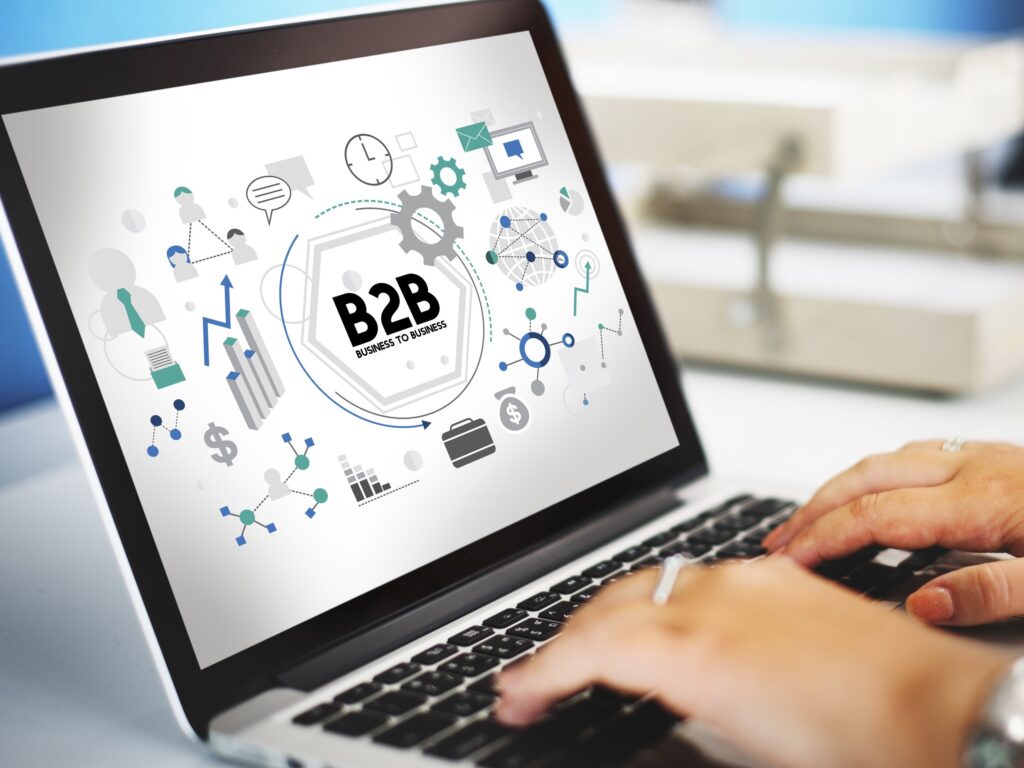Setting the stage for B2B tech copywriting.
Technology is constantly changing. Where innovation is paramount, effective communication becomes a necessity and a critical element of competitive advantage. I have seen companies pour their heart and soul into a tech solution or a SaaS platform, only to realise the potential gets lost in a sea of technical jargon.
Fear not. A secret weapon exists: the B2B tech copywriter.
They’re the bridge between brilliance and confusion, the translators who transform complex concepts into clear, actionable messages that drive business success.
Their words can potentially enlighten, motivate, and ultimately sway the decisions of the target customers.
B2B tech copywriters should:
- Welcome the challenge and role of being a strategic communicator in the ever-evolving world of B2B technology.
- Seize the opportunity to mould narratives and drive success for their clients and themselves.
- Capitalise on their unique position to explain complex technology concepts in accessible language, thus empowering the audience to make informed business decisions.
This blend of technical understanding and storytelling is critical to successful B2B content marketing.
Understanding your audience.
Every successful copywriting task should begin with a deep and thorough understanding of the target audience.
In B2B technology marketing, this demographic primarily consists of decision-makers seeking creative solutions to address their unique challenges.
A great B2B tech copywriter doesn’t just write words on a page. They dive deep into the industry, soak up the daily grind, and learn how things work. They interview and chat with the target audience, figuring out their terminology, how to simplfy it, and what keeps them up at night. By getting to the heart of their challenges and goals, B2B tech copywriters can create copy that hits the nail on the head.
This approach enables copywriters to establish an authentic connection with their target audience. They position themselves as trusted partners who genuinely understand their audience’s challenges. They can then offer the ideal solution that aligns with their audience’s needs and aspirations.
This level of understanding and partnership sets the stage for effective, impactful communication that resonates deeply and inspires action.
The art of decoding technical jargon.

For B2B tech copywriting, the ability to decode complex technical jargon is often a make-or-break skill. The maze of industry-specific terms that tech professionals frequently use can feel like a foreign language to those unfamiliar.
In such instances, the role of the B2B tech copywriter becomes dual-faceted:
- Firstly, they need to comprehend these intricate concepts.
- Secondly, they must translate them into a language that is easy to understand.
This isn’t a process of ‘dumbing down’ the information but delivering it precisely and clearly. Tactics such as analogies, metaphors, and real-world examples make complex ideas more accessible.
The ultimate objective is to move the audience from a state of bewilderment to one of clarity, which will then facilitate easier and quicker decision-making.
The role of storytelling in B2B technical writing.
The human brain naturally responds to captivating stories. In B2B tech copywriting, storytelling is a valuable strategy for showcasing technology’s potential. It’s the method of bringing one’s offerings to life, transforming them from mere concepts into practical solutions with real-world benefits.
Compelling storytelling in tech copy isn’t about spinning an elaborate tale. It’s about illustrating a vision of a world improved by your technology. Show how your product solved a customer’s problem, boosted productivity, or sparked innovation. Emphasise your unique value proposition through an engaging narrative.
Remember, the most memorable stories aren’t just about the technology—they’re about the people it helps and the changes it brings. Place your audience at the centre of your story.
Using testimonials and case studies adds credibility and authenticity. This approach aligns the audience’s goals with your solutions, persuading them through logic and emotion.
In essence, storytelling transforms B2B tech copy from merely informative to genuinely persuasive, motivating the audience to act.
Visual aids and infographics in B2B tech copywriting.
Visual aids and infographics are powerful tools in B2B tech copywriting, where complex concepts and data are common.
These tools simplify complex ideas, making them easy to understand. A well-designed infographic can tell a story on its own, presenting a lot of information visually appealingly.
Never underestimate the potential of these visual aids. The human brain processes visuals 60,000 times faster than text, and when such visuals become part of the story, they foster a more engaging, memorable interaction for the viewers. An engaged audience is always more inclined to comprehend, remember, and respond to the conveyed message.

Furthermore, these visual aids add to your brand identity, setting your content apart in a highly competitive market. They infuse authenticity and character into your message, creating an association between your brand and a spirit of innovation and creativity.
Features vs benefits.
Technology firms often highlight the unique features of their solutions. While these are important, they may not immediately resonate with potential clients. Generally speaking, they are more interested in understanding the benefits these features provide.
A feature is a specific characteristic of a product, such as “This software has an AI-driven interface.” The benefit answers the client’s question, “What’s in it for me?”
For example, “This software’s AI-driven interface learns from user behaviour to create personalised workflows, saving time and reducing errors. This improves overall productivity and efficiency.”
By focusing on these benefits, businesses can effectively show how their solutions meet their client’s needs and offer real advantages.
Mastering the art of strategic detailing.
While conciseness and scannability are important in B2B tech content marketing, detailed explanations and comprehensive information are still crucial.
B2B readers often seek in-depth knowledge. The key is to present these details strategically to maintain engagement and readability.
Instead of using dense, lengthy paragraphs, consider a ‘layered content’ approach:
- Start with an overview: Capture the essence of the topic concisely.
Dive into the details: Describe processes, discuss benefits, or elaborate on features.
Organise information: Use subheadings, bullet points, infographics, or interactive elements to allow readers to explore the content at their own pace.
This method ensures readers aren’t overwhelmed with information upfront, while those seeking more details can still find it. This approach accommodates both quick scrollers and detailed readers, enhancing the user experience for a wider audience.
By doing this, we ensure our writing is both informative and engaging, fully utilising the influence of a B2B tech copywriter.
Utilising case studies and use cases.

A well-executed case study or use case makes explaining complex tech solutions much easier. These tools demonstrate how a product or service works in the real world.
They help the audience understand the value and potential positive impact of the offering. Presenting details in a case study format paints a vivid picture.
This factual content resonates with the target audience, making your product more relatable and highlighting its importance and benefits. It showcases the positive impact of storytelling in B2B content marketing.
Team up with tech insiders.
B2B tech copywriters need insights from industry specialists with deep expertise to stay ahead.
Think of them as your secret advisors. Working with these experts gives you access to valuable information and insights. This helps you stay current and break down complex concepts into clear, understandable language for your audience.
The result is accurate and engaging content. Collaborating with industry specialists isn’t just beneficial; it’s essential for a successful B2B content marketing strategy.
Conclusion.
Everything seems to move fast in tech. Complexity is the norm; clear communication can distinguish between getting noticed and getting lost in the noise. The good news? Following this blog’s strategies, you can take your B2B tech copywriting to the next level.
Imagine this: even your most mind-bending tech concepts become clear and engaging for your audience. No more jargon headaches! By combining technical know-how with the art of storytelling, you can create content marketing that genuinely connects.
Think of it as crafting content that captivates, not confuses. Content that positions you as an industry authority and sparks honest conversations with your target audience.
Why should businesses settle for ordinary copy when they can achieve extraordinary results? Don’t wait! Put these B2B tech copywriting tips into action and create content that converts today!
B2B technical writing FAQs.
What does a B2B tech copywriter do?
A B2B tech copywriter specialises in creating compelling content that communicates complex technology products or services to a business audience. Their role involves understanding both the technology they are writing about and the needs and challenges of their target audience. They must translate technical jargon into clear, accessible language that highlights the benefits and applications of the technology. This can include writing website content, blog posts, case studies, white papers, product descriptions, and more. B2B tech copywriters also play a strategic role in shaping the brand’s voice and messaging, ensuring that all content aligns with marketing goals and effectively engages the target audience. Their work is crucial for generating leads, building brand awareness, and ultimately driving sales in the competitive B2B technology market.
What are the biggest challenges in B2B tech copywriting?
The biggest challenges in B2B tech copywriting stem from the need to simplify complex information without losing its essence. This includes translating technical jargon into accessible language that resonates with a diverse audience, including decision-makers who may not have a technical background. Maintaining accuracy while ensuring the content is engaging and persuasive is another significant hurdle. Furthermore, B2B tech copywriters must stay abreast of rapidly evolving technologies to remain relevant and credible. Balancing SEO requirements with compelling storytelling and keeping the content focused on the audience’s needs, rather than just the product’s features, are additional challenges that require strategic thinking and creativity.
How can I write B2B tech copy that is clear and concise, but still informative?
Writing clear, concise, and informative B2B tech copy involves several key strategies. Focus on understanding the core message you want to convey and the most important benefits your technology offers to the target audience. Use short, simple sentences and active voice to make the copy more readable. Avoid unnecessary technical jargon, but when technical terms are essential, explain them in plain language. Break down complex ideas using bullet points, subheadings, and paragraphs to improve scannability. Incorporate examples, analogies, or metaphors to illustrate points more vividly. Finally, always keep the reader’s perspective in mind, addressing their questions, challenges, and how the technology can solve their specific problems.
What are some good examples of using storytelling in B2B tech copywriting?
Good examples of storytelling in B2B tech copywriting often involve customer success stories or case studies that highlight how a product or service has solved a particular challenge. For instance, a narrative could start with a client facing a significant issue, such as data security threats. The story would detail the journey of identifying the problem, choosing your technology solution, and the positive outcomes achieved, like enhanced security and peace of mind. Other examples include using hypothetical scenarios to depict a day in the life of a user before and after implementing your solution, showcasing improvements in efficiency, productivity, or cost savings. These stories create a relatable and engaging narrative that helps the audience visualise the benefits of the technology in a real-world context.
What is the difference between features and benefits in B2B tech copywriting?
In B2B tech copywriting, features refer to the specific characteristics or functions of a product or service, while benefits explain how those features provide value to the customer. Features might include technical specifications, such as software being cloud-based or having AI capabilities. Benefits, on the other hand, translate these features into tangible outcomes that solve the customer’s problem, such as the convenience of accessing data from anywhere with cloud-based software or improved decision-making with AI analytics. Focusing on benefits rather than just features helps the audience understand the real-world impact of the technology on their business, making the content more persuasive and relatable.
Consider Kyyte as your go-to partner for all your B2B copywriting needs.
